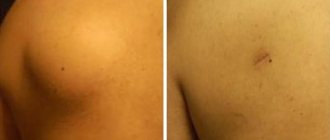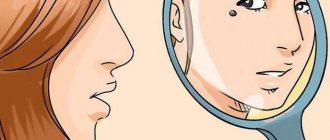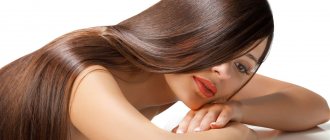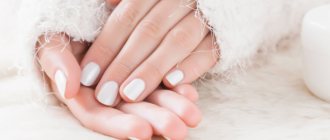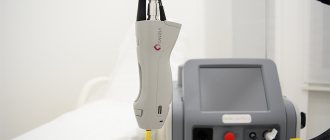Succinic acid is a useful additive that has antioxidant and metabolic effects.
- How to take succinic acid
- Can the medicine be given to pregnant women?
- How to take succinic acid for weight loss
- Contraindications
- Adverse reactions and overdose
- What are the benefits and harms of succinic acid?
- Is it possible to take succinic acid with alcohol?
- How much does succinic acid cost?
What is succinic acid used for?
The tablets are often prescribed to be taken as a dietary supplement. They are prescribed for functional asthenic conditions. Particularly effective during age-related ailments, as well as under extreme conditions.
Taking the drug allows you to fight excessive fatigue, stressful situations, improves memory and brain activity, and fights headaches. The supplement is taken for ischemia and vasospasm.
Experts advise taking the medicine in addition to the main treatment for pathologies of the cardiovascular system.
With all the diseases discussed above, many people are forced to take medications for a long time or throughout their lives that help maintain the functioning of the heart, nervous system, and brain function. The use of succinic acid makes it possible to significantly reduce the number of such medications and the duration of their use. The result is achieved thanks to pharmacology, since the drug is able to enhance the effect of drugs intended for primary treatment.
Analogs
The following drugs have a similar effect:
- Neutropin - used in the treatment of neurological diseases, skull injuries, alcohol poisoning. Available in ampoules. It is not used in cosmetology practice.
- Cortexin - used in the treatment of brain pathologies, speech delays and mental development. Available in powder form. Not used in cosmetology.
- Thiotriazolin in ampoules. Indications for use: heart disease, arrhythmia, hepatitis and liver fibrosis.
Cream, hair mask with succinic acid is inexpensive and its benefits are undoubted. but the use of this medicinal substance is subject to the following rules:
- Do not use every day, just follow general recommendations
- At the first signs of thinning of the skin of the face, body or hair, use should be discontinued.
How to take succinic acid for weight loss
Succinic acid has proven itself well for weight loss. The active substance removes all harmful substances from the body, starting the work of the stomach and intestines and promotes the release of excessively accumulated water.
According to nutritionists, tablets can only be taken as an auxiliary substance to activate the metabolic process. At the same time, you need to maintain proper nutrition and lead an active lifestyle, including physical activity. If you don’t follow these rules, the extra pounds won’t go away.
You need to drink 3 tablets per day for 3 days. Then take a 1-day break, when you also need to limit the amount of food consumed and physical activity, and then resume the three-day course.
Another option is to take 1 g of succinic acid every day for a month.
Contraindications
Preparations based on C4H6O4 are well tolerated and have no absolute contraindications. But, nevertheless, in medicine there is a list of recommendations when you need to take this substance with caution:
- stomach ulcer;
- pregnancy accompanied by late gestosis and breastfeeding;
- pathologies of the urinary system;
- angina pectoris;
- individual intolerance to the active substance and other components of the product;
- duodenal ulcer;
- gastritis with increased acidity or increased production of gastric juice;
- acute increase in blood pressure;
- chronic hypertension;
- glaucoma and frequently recurring increased eye pressure;
- allergy.
What are the benefits and harms of succinic acid?
The most important property of the supplement is its ability to help the body cope with stressful situations and protect it from the negative effects of harmful microorganisms. This allows the medicine to be included in combination with other drugs to treat various diseases.
Also, taking the supplement has a positive effect on the condition of the skin, helps eliminate rashes, and removes swelling. Succinic acid is added to the composition of many cosmetic products. They can be purchased ready-made or prepared yourself. YAC is also used to make head masks that improve the condition of hair and accelerate its growth.
If you use pills thoughtlessly and in large quantities, it can harm the human body. The drug has contraindications that you should familiarize yourself with before taking it. Also, succinic acid should not be taken continuously for several days. Usually it is taken for no longer than 28 days (day breaks are allowed).
What it is?
Succinic acid is a natural compound needed by living organisms as an active component of organic synthesis. Most of it on Earth is present in amber. This is the starting material for producing acid. There are modern methods for its extraction - a white powder containing crystals is formed from benzene or n-butane. The product has a sour taste and dissolves in water.
This substance is considered valuable and has a positive effect on people. Succinic acid is found in coal, resins, berries, turnips, plants, sunflower seeds and barley. It is also found in lactic acid products, cheeses, aged wines, flour products based on rye flour, yeast, and seafood. But there are not many of these products, so the pharmaceutical industry produces it in different preparations to fill the shortage.
The product is sold in tablet form. To prepare masks, you need to grind them. Usually additional components are used that can enhance the effect of the procedures. The product is stored at room temperature, which is no more than 25 degrees, out of the reach of children. It is important that it is not exposed to moisture or direct sunlight. Shelf life is 4 years. The drug is dispensed without a doctor's prescription.
Strategy and tactics for treating diffuse hair thinning
Despite many years of research into hair loss, the pathogenesis of this common disease is still not completely clear. However, it is important for practitioners to make certain decisions in choosing a method and tactics of therapy, as well as to be able to evaluate and apply newly developed techniques. Issues of drug treatment of hair loss are being actively studied today. With all the variety of modern means, in order to avoid polypharmacy and to achieve the best clinical, aesthetic and psychological results, it is necessary to choose the correct treatment algorithm, taking into account the etiopathogenesis. The treatment strategy for diffuse hair loss is a specific plan covering a long period of time and is determined by the following tactics:
I. Pathogenetic treatment. II. Taking vitamins. III. Use of biologically active additives. IV. Improving microcirculation of the scalp. V. Stimulation of hair growth.
I. Pathogenetic treatment. The etiology and pathogenesis of diffuse hair loss is not fully understood. However, today it can be noted that with diffuse hair loss, in contrast to severe forms of alopecia - focal or scarring, there are no organic changes in the hair follicle, but only the rhythm of hair change is disrupted. Consequently, complete baldness does not occur and with proper treatment it is always possible to restore hair density. Androgenetic alopecia is often classified as diffuse baldness. Androgenetic alopecia (AA) is fundamentally different from diffuse alopecia (DA). First, this hair loss has typical hair thinning or balding in the frontal and/or parietal areas. Secondly, in AA, the main links in the pathogenesis are the excess content of androgens in the body tissues or the increased sensitivity of specific receptors to them, as well as a local disorder of androgen metabolism caused by genetic predisposition [1–3]. Therefore, in the absence of signs of androgenetic hair loss, the doctor needs to direct treatment to restore the rhythm of hair change. In this situation, homeopathic medicines can be an alternative treatment. Recent studies indicate the effectiveness of homeopathic medicines in the treatment of various types of alopecia. By complementing traditional treatment, homeopathic medicines expand the possibilities for optimizing treatment. What they have in common is a regulatory and stimulating effect due to the inclusion of autogenic mechanisms in therapeutic processes. The drug of choice is the complex homeopathic drug Selencin®, prescribed 1 tablet 3 times a day 30 minutes before meals or 1 hour after meals for 2–4 months. Practical experience in using this drug has proven its high effectiveness, which is reflected in scientific works [4–6].
AA therapy is aimed at the main links of pathogenesis: regulation of the level of androgens in body tissues, reduction of the increased sensitivity of specific receptors to them, as well as regulation of local disorders of androgen metabolism [1–3].
Contrary to the popular opinion about the need to prescribe oral antiandrogens for AA, in our opinion, treatment should begin with topical drugs with an antiandrogenic effect, especially in women. In women, unlike men, AA progresses more favorably. In the parietal region in females, there is a miniaturization of the hair follicle, a predominance of vellus hair over shaft hair, which is clinically manifested by widening of the parting. In men, complete atrophy of the hair follicles gradually occurs, leading to final and irreversible hair loss. Consequently, in women, unlike men, AA is easier to treat and hair restoration is always possible.
Specialized products for the treatment of AA and DA are the “Selencin®” series, consisting of a complex of external preparations (spray, shampoo, balm and hair mask). The Selentsin® cosmetic program for hair loss is a combination of innovative patented French components and traditional remedies for the treatment of alopecia. The undoubted advantage of this program is its two-stage therapy, which provides a systematic approach to solving the problem of hair loss. Stage 1 - suppression of 5-alpha reductase activity and activation of vascular endothelial growth factor (VEGF, Vascular endothelial growth factor). Stage 2 - stimulation of hair growth by enhancing microcirculation of the hair follicle.
The products of the Selentsin® cosmetic line were developed jointly with leading French companies developing and producing ingredients for the cosmetic industry - Naturex SA and Silab. The complex includes patented components - the latest developments from leading French manufacturers: Anageline® and Seveov®. Anageline® (Silab, France) is an ingredient obtained from sweet white lupine. Anageline® 0.25% solution has the ability to inhibit 5-alpha reductase activity by 18% (in vitro) and stimulate VEGF by 17% (in vitro). A 0.5% Anageline® solution has been proven to increase the metabolic activity of cells by 21% (in vitro), thereby reducing hair loss, promoting hair growth and increasing hair density. Scientific studies have shown that, thanks to the patented Anageline® component, hair loss is reduced by 17% in 3 months [7]. Selentsin® cosmetics contain the maximum recommended amount of the active component Anageline® - up to 9%.
Seveov® is an active ingredient produced by Naturex (France), obtained from the tubers of the Peruvian maca plant. Maca is grown in highland plantations in Peru. This component is new in the field of hair care. Seveov® actively influences the angiogenesis of blood vessels adjacent to the hair follicle, which helps to lengthen the anagen phase. Seveov® stimulates hair growth by 93% (in vitro).
The preparations also contain other active ingredients: caffeine, burdock extract, nettle extract, collagen hydrolyzate, biotin, menthol. Caffeine is a natural hair growth stimulant, a powerful antioxidant, and neutralizes the effects of testosterone. The high effectiveness of these ingredients is explained by the fact that they can penetrate the epidermal barrier, reaching the hair papilla.
In the production of the Selentsin® cosmetic line, high-quality raw materials from leading suppliers and companies developing cosmetic raw materials are used. Including CO2 extracts (nettle, burdock, mint, etc.) - extremely rich ingredients from plant raw materials, obtained by supercritical extraction with carbon dioxide, which are an order of magnitude more active than other types of extracts, do not contain solvents and various impurities.
After finishing using the products from the Selentsin® cosmetic line, there is no withdrawal effect.
Systemic drugs with antiandrogenic action, despite pronounced side effects (decreased potency and/or libido, impaired ejaculation, decreased ejaculate volume, enlarged and painful mammary glands, increased blood levels of luteinizing and follicle-stimulating hormone, decreased concentration of prostate-specific antigen (PSA), etc.) d.), are widely used for the treatment of AA in men.
Finasteride (Propecia®) is the most popular drug in the treatment of AA. It is a type II 5-alpha reductase inhibitor that reduces the conversion of testosterone to dehydrotestosterone. It is effective for a duration of use of 6 to 12 months at a dose of 1 mg/day [8, 9].
Clinical observations showed that after 5 years of taking the drug, only 0.3% of patients reported a weakened sexual desire and erectile dysfunction. Since finasteride reduces PSA levels by 30–50%, men over 40 years of age are recommended to double the results when indicating PSA levels (this is indicated in the instructions for the drug) [8].
This drug is not officially approved for use in the treatment of women with alopecia, because it has a teratogenic effect on male embryos. However, some authors recommend prescribing finasteride to women in combination with an oral contraceptive [9]. This drug is most effective for incipient hair loss, so treatment should be started at the first signs of hair thinning. It is important to emphasize that the absence of a change in hair density during treatment is not a failure of therapy, but, on the contrary, indicates its success, since continued hair loss should lead to significant thinning over time [8].
Dutasteride (Avodart®), which inhibits type I and II 5-alpha reductase, has not yet received full FDA approval for the treatment of AA and is under clinical investigation. . Currently used only in the treatment of prostate hyperplasia. According to modern studies, the effectiveness of dutasteride at a dose of 2.5 mg/day was superior to the effectiveness of finasteride at a dose of 5 mg/day [9].
Estrogens are indirect antiandrogens and are sometimes used to treat AA in women in the form of contraceptive medications. On the other hand, estrogens act not only as antiandrogens, but also as natural stimulators of hair growth, since estrogen-stimulated hair follicles are located in the parietal region [9]. It is known that after 30–35 years, a gradual decrease in the content of some sex hormones in women begins. During peri- and postmenopause, ovarian function declines and the production of estrogens by the follicular apparatus almost completely stops, but the secretion of their androgenic precursors continues in the ovarian stroma. Thus, the total amount of estrogen hormones in women after 40–45 years of age decreases by approximately 13 times compared to the normal average values. This leads to estrogen deficiency syndrome, but, unlike hypoestrogenism, the formation of testosterone and androstenediol in the ovaries continues for a longer time [3]. An important condition for the effectiveness of conservative measures in the correction of age-related AA during menopause is the prescription of hormone replacement therapy (HRT), based on modern ideas about the etiopathogenetic essence of the menopause. In domestic dermatology, this direction is taking its first steps, however, studies of HRT in the practice of dermatovenerologists have shown encouraging results [3]. It should be taken into account that, despite the widespread use of HRT in gynecological and gerontological practice, there is a fairly wide range of contraindications that prevent the administration of this type of treatment to women with concomitant pathology associated with the development of menopausal syndrome [3].
II. Vitamins are a group of organic substances combined by chemical nature, united on the basis of their absolute necessity for the body as an integral part of food. Of course, vitamins are not a supplier of energy for the body and do not have a significant plastic value, but they play a vital role in metabolism, participate in many biochemical reactions, performing a catalytic function as part of various enzymes or acting as regulatory intermediaries, performing signaling functions of exogenous prohormones and hormones . An increasing deficiency of vitamins, disrupting metabolism, aggravates the course of any disease and prevents their successful treatment. The dividing cells of the hair follicle are especially sensitive to vitamin deficiency. What are the tactics in choosing vitamins for diffuse hair loss? Of course, preference should be given to natural vitamins obtained by extracting from plants, rather than chemically synthesized in production. Natural vitamins contain a whole complex of substances that have similar vitamin activity, and not just one substance, for example, natural vitamin E may include all tocopherols existing in nature, and not just one tocopherol. Synthetic vitamin C is only ascorbic acid and nothing else. Natural vitamin C, extracted from rose hips, contains a whole complex of vitamins C, as well as bioflavonoids (vitamin P). Natural vitamins are better absorbed and excreted more slowly than synthetic ones. For hair loss, various vitamins C, PP, A, B6, B1, B12 are recommended; multivitamin complexes and biologically active supplements are widely used, the composition of which is specially selected for hair treatment (Inneov, Alerana, Doppelgerz, etc.) .
III. Biologically active additives (BAA). The human diet today must contain more than 600 different substances (nutrients). Insufficient intake of micronutrients from food is a common problem in all civilized countries. It arose as an inevitable consequence of a decrease in energy expenditure and a corresponding decrease in the total amount of food consumed by modern man. In order for the hair shaft to grow strong, elastic and long, building materials are needed for it. What provides elasticity and strength to hair? The hair shaft consists of proteins, lipids, pigment, water and, of course, microelements, the most important of which are sulfur, calcium and magnesium. An essential component of keratin is the protein cystine (cysteine disulfide). It is cystine, due to disulfide bonds, that tightly strengthens keratin molecules together. Therefore, the largest amount of sulfur is contained in the keratin of hair and nails. Therefore, sufficient sulfur intake by the body is necessary for hair strength and elasticity. The risk group for the formation of sulfur deficiency is people who eat insufficiently and monotonously, with an increase in consumption of phosphates - lemonade, canned food, sausages, etc. [10].
Another strategically necessary component in the treatment of alopecia is yeast (“Dry brewer’s yeast, purified with sulfur “Evisent”, “Merz Yeast”). Yeast is one of the most effective complex natural vitamin preparations. They have been used in medicine for several decades to maintain natural metabolism, strengthen the immune system, increase performance, and improve well-being.
The therapeutic value of brewer's yeast is determined by the presence of large amounts of vitamin D (in the past, before the production of a synthetic analogue, brewer's yeast was used as a raw material for the production of vitamin D); content of B vitamins; zinc, calcium, amino acids; presence of orotic acid. An important point is that vitamins, micro- and macroelements of yeast are found in protein complexes, which determines the gradual nature of their entry into the human body. Thus, yeast improves the absorption of food, activates the transport functions of the intestine, normalizes metabolic processes, and has an immunostimulating and detoxifying effect.
In the treatment of alopecia, “Dry brewer's yeast purified with Evisent sulfur” (sulfur, vitamins B1, B6, PP, B2) is used, in the production of which a unique technology is used: incubation (growing) of yeast cultures occurs in special sulfur-enriched media, which ensures absorption and preservation of micronutrients by the yeast cell and, consequently, increased content and high bioavailability of the micronutrient (sulfur) in the preparation. All this makes it possible for the body to maximally absorb the micronutrients contained in the dietary supplement. Low-temperature drying technology at the final stage of production preserves the increased content of B vitamins in the yeast.
IV. Improving microcirculation of the scalp can be achieved by:
1) medicines; 2) irritant therapy; 3) physiotherapy.
Dermatology has extensive experience in the use of vascular drugs in the treatment of hair loss (xanthine nicotinate 1 tablet 2-3 times a day for 2 months, pentoxifylline (Trental) 1 tablet 3 times a day immediately after meals for 3 weeks; dipyridamole (Curantil) 1 tablet 3 times a day an hour before meals, for 1–3 months; Troxevasin 1 capsule 2–3 times a day for 1–3 months).
Currently, external products containing a 2–5% alcohol solution of minoxidil (Regaine, Alopexy, Pregain, Azelomax, Azelofelin, Alerana, etc.) have become very popular. Minoxidil, a potassium channel activator and vasodilator, was originally registered as an antihypertensive agent with a significant side effect of hypertrichosis. In 1988, the FDA approved a topical 2% solution for the treatment of hair loss and in 1997 allowed a 5% solution to be sold over the counter. Men are recommended to use a 5% minoxidil solution 2 times a day, women should use a 2% solution also 2 times a day. Short-term hair loss may occur 4–8 weeks after starting treatment. The patient must be warned that the use of the drug should not be stopped. The recommended course of treatment is 24 weeks [8]. Having extensive experience in using this drug, we can confidently speak about its high therapeutic effectiveness. However, along with the therapeutic effect, side effects were also revealed: allergic and contact dermatitis, hypertrichosis on the face, the need for long-term treatment, and the lack of a prolonged effect [8]. Recently, a structural analogue of minoxidil, aminexil, has been widely used, which is part of various cosmetics (lotions, shampoos), but still has the same side effects.
An ancient method that improves microcirculation of the scalp is still successfully used in dermatology in the form of irritant therapy. Preparations that can have a local irritating effect are well known to practicing doctors: tincture of capsicum, Capsitrin, pepper-camphor liniment, bodyagi pulp, 2% alcohol solution of essential mustard oil, etc.
Physiotherapeutic methods used in the treatment of diffuse hair loss are: local darsonvalization (silent discharge), ozokerite therapy, head massage, ultratonotherapy, warm compress. These methods cause a long-lasting vasodilator effect.
V. Stimulation of hair growth. According to most authors, hair growth can be enhanced with the help of herbal medicine (burdock oil, chamomile decoction, strings, etc.). Still, practice shows that these means are ineffective. To obtain the desired result, it is necessary to prescribe modern drugs containing active ingredients, which include Seveov®, caffeine, biotin (Selencin®), which can actually prolong the hair growth phase.
The drugs of choice may be the prostaglandin analogues latanoprost and bimatoprost, which are used in the treatment of ocular hypertension and glaucoma, but there is a side effect in the form of increased eyelash growth. Cosmetologists drew attention to this feature and conducted several small-scale studies. Bimatoprost (Latisse®) is currently used to stimulate eyelash growth. Foreign literature mentions extensive studies of latanoprost (Xalatan®) in stimulating scalp hair growth [9].
In conclusion, it should be noted that in the world there are about 300 thousand methods of treating baldness. With such a variety of drugs and methods, patients and doctors are often prone to polypharmacy, which makes it difficult to assess the effectiveness of therapy, increases the risk of side effects, reduces patient adherence to treatment and increases the cost of therapy. We must also remember that the number of hair follicles on the head cannot be increased by any medicine, so in the pursuit of beauty one should not forget the main commandment “do no harm.”
Literature
- Grishchenko Yu. V. Optimization of diagnosis and pathogenetic therapy of androgenetic alopecia in women. Author's abstract. for the job application Ph.D. honey. Sci. M., 2011. 30 p.
- Mareeva A. N. Features of clinical manifestations of androgenetic alopecia in women of reproductive age // Bulletin of Dermatology and Venereology. 2011, no. 1. pp. 103–107.
- Morgulis Yu. A. Hormone replacement therapy in the treatment of seborrheic dermatitis, rosacea and premature hair loss in menopausal women. Author's abstract. for the job application Ph.D. honey. Sci. M., 2010. 24 p.
- Batkaev E. A., Gallyamova Yu. A. Complex homeopathic drug “Selencin” in the treatment of Telogen effluvium // Bulletin of postgraduate medical education. M., 2002, No. 3. P. 42–43.
- Batkaev E. A., Gallyamova Yu. A., Kantimirova Yu. A. Homeopathic medicines in the practice of a dermatologist. Textbook, 2006. 30 p.
- Hassan Khaled. Optimization of therapy for diffuse alopecia, taking into account disturbances in microcirculation and microelement metabolism. Author's abstract. diss... cand. honey. Sci. M., 2011.
- Tenseurs naturels: innovations, expertise et savoir-faire natural tensors: innovation, expertise and know-how expression cosmetique: guide des ingredients cosmetiques // Guide of cosmetic ingredients in November, 2011.
- Hair transplantation. Ed. Robert S. Haber and D. B. Stough. M.: Red Esliver LLC, 2009. 219 p.
- Kevin J., McElwee Ph. D., Jerry Shapiro. Promising Therapies for Treating and/or Preventing Androgenic Alopecia // Skin Therapy Letter. 2012; 17 (6).
- Rebrov V. G., Gromova V. A. Vitamins and microelements. M.: “ALEV-V”, 2003. P. 670.
Yu. A. Gallyamova, Doctor of Medical Sciences, Professor
GBOU DPO RMAPO Ministry of Health and Social Development of Russia, Moscow
Contact information about the author for correspondence

